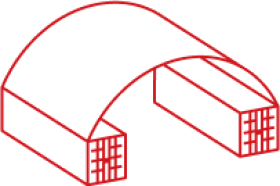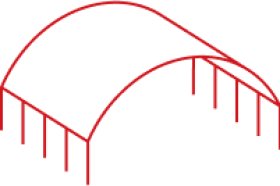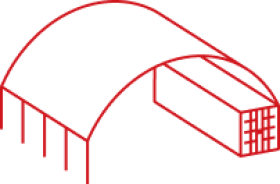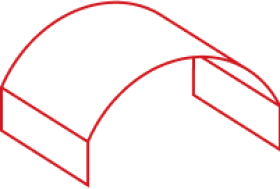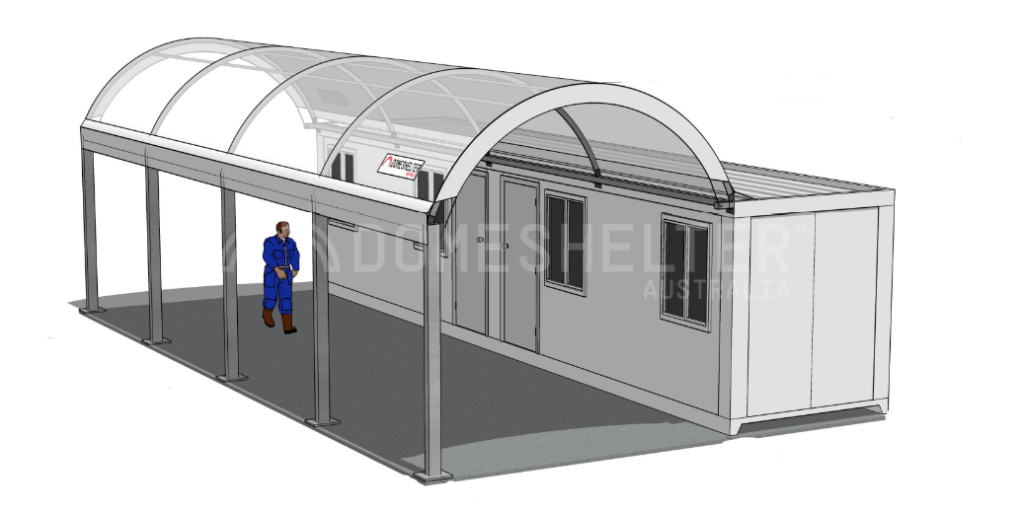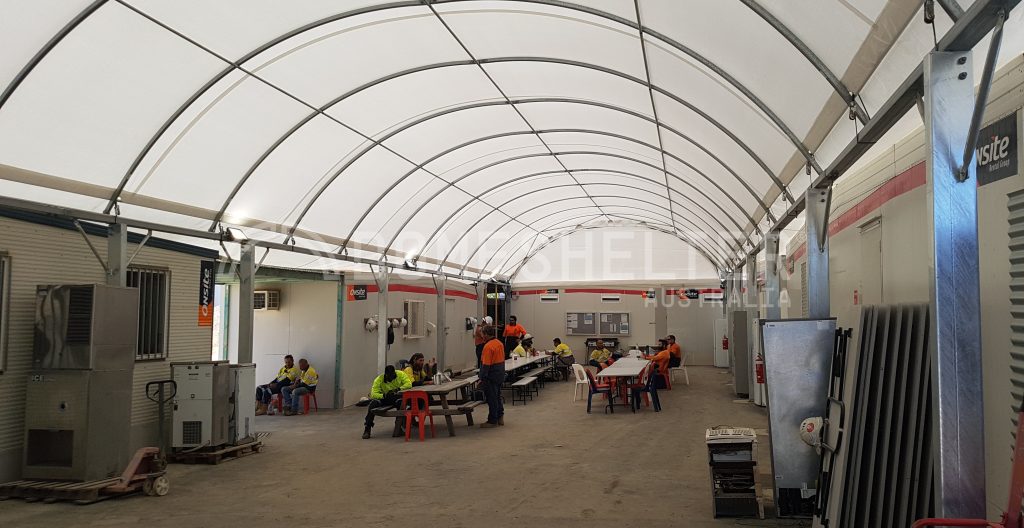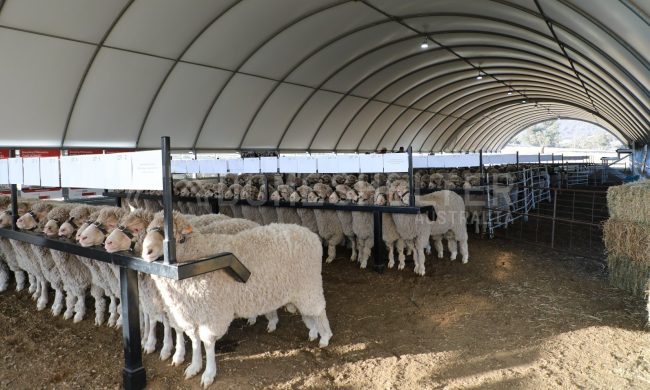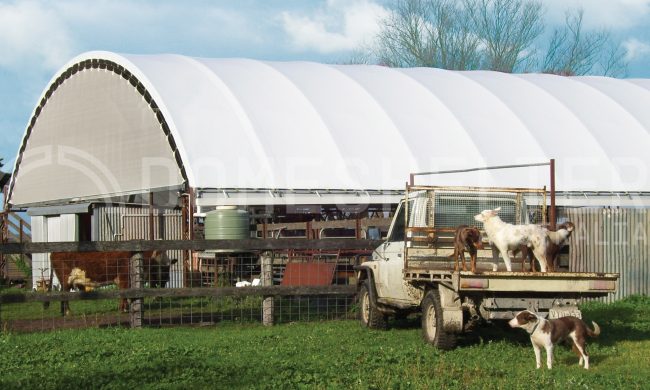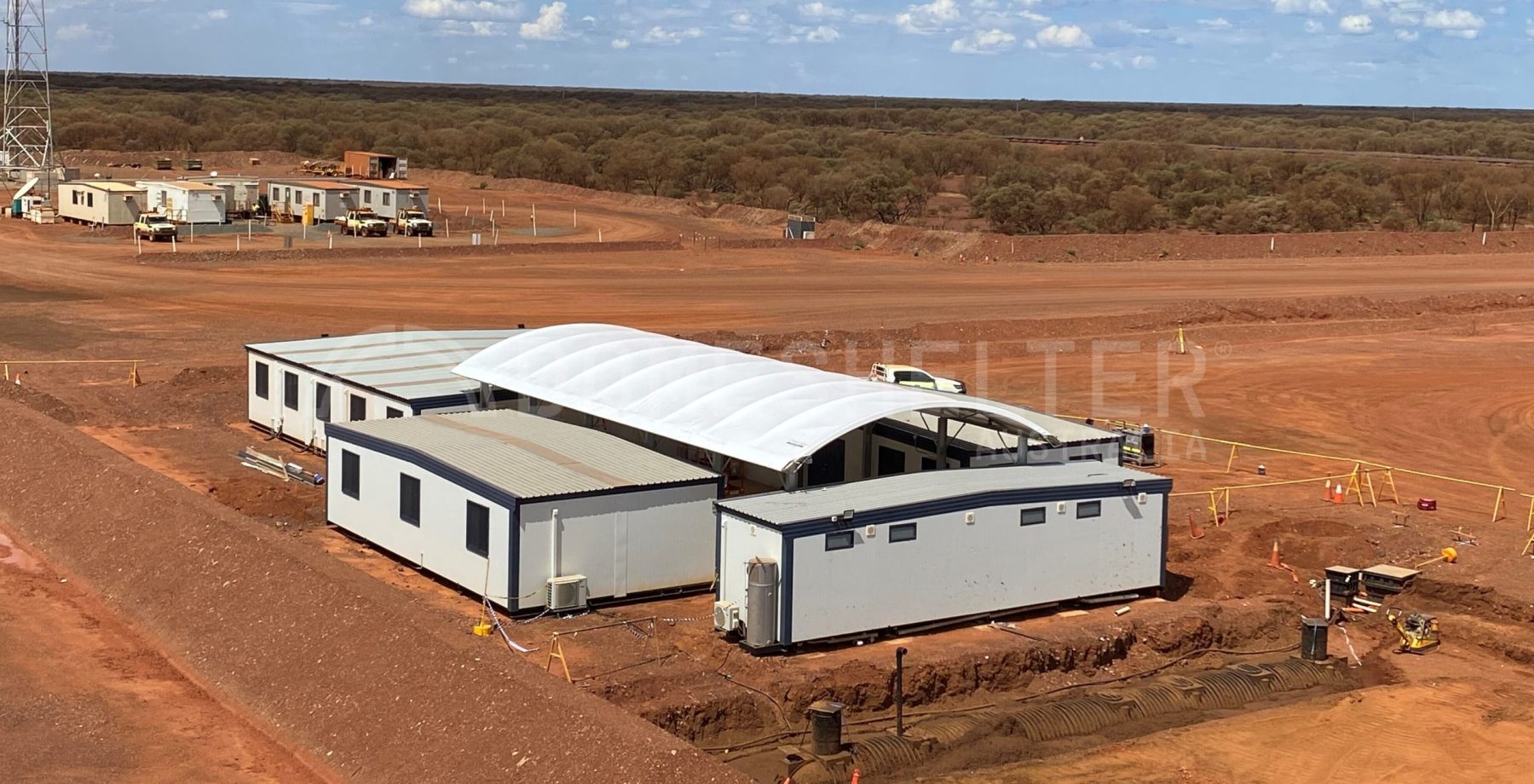
Transportables, known colloquially as ‘dongas’ in Australia, are versatile structures used across various industries for offices, crib rooms, and more. They are commonly used on worksites across a number of sectors, such as mining, agricultural, and industrial. Fabric Shelters are also prevalent in these industries, leading to the question of whether you can combine transportables and Fabric Shelters arising.
The answer is yes, but it’s not an easy, one-size-fits-all solution. Any Fabric Shelter’s substructure becomes a critical component of the structural durability and longevity of the Shelter itself. Therefore, it is important that the structural integrity of any prospective substructure is well analysed to ascertain its adequacy.
This article explores the essential factors and engineering considerations to ensure a safe and effective combination of transportables and Fabric Shelters.
What is a Transportable?
A ‘transportable’ refers to a building that is fabricated in one location and, once constructed, is moved or ‘transported’ to a separate location for use. A transportable can be a home, an office, or virtually any other type of structure.
In the context of this article, a ‘transportable’ refers to a small, typically one room structure, found on various worksites where they are used as offices, crib rooms, etc. These temporary buildings are also often referred to in Australia by their slang name, ‘dongas’.
Transportables are particularly popular on mine sites, since they are fabricated off-site, easy to transport, and able to be taken off-site without difficulty at contract completion. In mining their uses include:
- Workers’ accommodation
- Offices
- Kitchen and dining facilities
- Medical huts
- Laundry rooms
They are also common on agricultural, industrial and construction sites, where their uses are similar to mining.
Can I Mount a Fabric Shelter on Transportables?
Fabric Shelters are a popular fixture on mine sites, industrial sites, farms, and more, for many of the same reasons that transportables are utilised:
- Most of the fabrication of Fabric Shelters is done off-site, speeding up and simplifying the process for clients
- Easy to transport, even to remote and harsh locations
- Low to no in-ground footing designs available for minimal environmental impact and easy relocation at the end of site tenure
Naturally, due to the prevalence of both transportables and Fabric Shelters on these worksites, a combination of the two is a question that clients may raise.
The short answer is yes, mounting a Fabric Shelter on transportables is a possibility.
However, this option would typically be limited to smaller Shelters in lower wind region areas. As with any highly customised project plan, important considerations should be made to ensure you are making the right choice for your site and your people’s safety.
The Importance of a Properly Engineered Solution
Anything highly customised, such as mounting a Fabric Shelter on an existing building, a shed, or on transportables, requires a great deal of design and engineering work to ensure a safe and compliant result.
A one-size-fits-all approach would not be suitable for an alternative mounting solution such as this, due to the wide range of variations in transportable designs, sizes, and shapes.
An ill-fitted or inadequately engineered mounting system for such a design could pose serious risks. The potential for failure associated with an inadequately engineered shelter would be extreme; such a failure could destroy equipment and assets, injure people, or worse.
If you are considering such a highly customised Fabric Shelter project, it is vital to work with a reputable supplier, who possesses the design and engineering capabilities to deliver a trustworthy solution. Otherwise, the risks could be severe.
DomeShelter Australia’s Expertise
DomeShelter Australia has completed a number of projects where a DomeShelter™ Structure was mounted onto transportables, on either one or both sides.
This type of solution would typically be limited to smaller Shelters, in lower wind region areas.
DomeShelter Australia’s dedicated in-house engineering capability meant that these projects could be handled in-depth to ensure the final Shelters were able to withstand the elements and were designed and manufactured correctly.
Specialised mounting systems are required for these projects, customised to suit the transportables involved. The DomeShelter™ team’s experience with a range of highly fit-for-purpose projects, such as where Shelters are mounted on transportables, existing buildings, etc, means that this is no issue. Any client looking for a customised solution similar to these is encouraged to get in touch.
It is important to note that DomeShelter Australia’s engineering stops at the top of the transportable – that is, covers the Fabric Shelter only. It is the client’s own responsibility to ensure the transportable is engineered to withstand the additional loads of the Fabric Shelter, and will be able to support itself in all weather conditions.
A DomeShelter™ Consultant may also be able to use their experience to suggest an alternative solution that avoids the complexity involved with attaching the Shelter directly to a transportable, while still incorporating the transportable(s) into the final project. In the past similar solutions have included Post Mounted DomeShelter™ Structures with transportables underneath or around them.
Conclusion
The possibility of mounting a Fabric Shelter on a transportable or donga holds great potential for creating adaptable and weather-resistant spaces in various industries. However, it’s crucial to approach this customised solution with the utmost care and engineering expertise to ensure safety and compliance.
With years of experience and a dedicated in-house engineering team, we have successfully handled projects where DomeShelter™ Structures were mounted onto transportables, ensuring they are able to withstand harsh conditions and are designed correctly. Get in touch with our experts today to explore what is possible for your next project.
